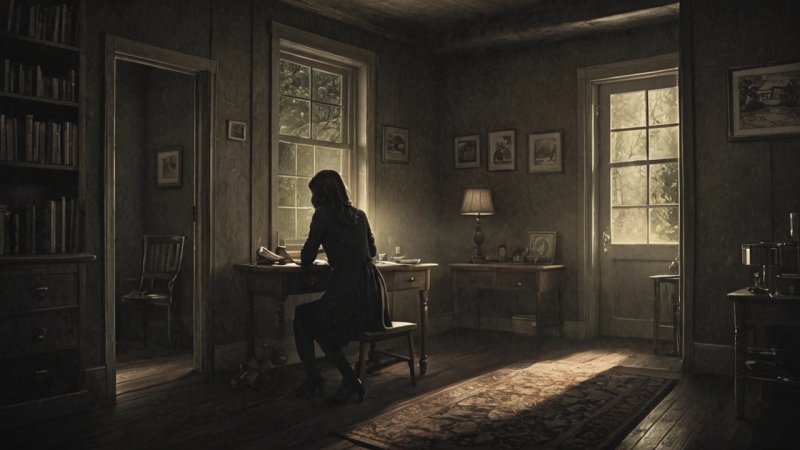Mystery novels have long captivated readers with their intricate plots, compelling characters, and the tantalizing promise of revelation. At the heart of these narratives lies suspense—a powerful literary device that keeps readers on the edge of their seats, eagerly turning pages to uncover the truth. This article delves into how mystery novels engage readers through suspense, exploring techniques that authors employ, the psychological impact of suspense, and the various sub-genres within mystery that utilize suspense in unique ways.
The Nature of Suspense in Mystery Novels
Suspense can be defined as a state of mental uncertainty, anxiety, or excitement about what may happen next. In the realm of mystery novels, suspense is not just an emotional response; it is a carefully crafted element that drives the narrative forward. Authors create suspense by introducing conflict, raising questions, and revealing information strategically, ensuring the reader remains invested in the outcome.
The Role of Conflict
At the core of every mystery lies a conflict—often a crime or a puzzle that needs to be solved. This conflict generates questions that propel the narrative. For instance, who committed the crime? What are their motives? As readers navigate through the plot, they are drawn into a world where they must piece together clues alongside the protagonist. This shared journey fosters a sense of engagement, as readers are not merely passive observers but active participants in the unraveling of the mystery.
Raising Questions
Suspense thrives on unanswered questions. Authors strategically place red herrings, misleading clues, and unreliable narrators to keep readers guessing. For example, in Agatha Christie's works, she often introduces multiple suspects, each with their own secrets and motives. This technique not only heightens suspense but also invites readers to engage in critical thinking, promoting a deeper connection to the narrative.
The experience of suspense in reading mystery novels is deeply psychological. As readers become engrossed in the narrative, they experience a range of emotions—from fear and excitement to curiosity and dread. This emotional rollercoaster is a crucial aspect of why readers are drawn to mystery novels.
One of the most potent aspects of suspense is the fear of the unknown. Authors often withhold information or delay revelations to build tension. This technique is evident in works like Stephen King's thrillers, where the threat is often more ambiguous, leaving readers to ponder the worst-case scenarios. The fear of what could happen next keeps readers engaged, as they are compelled to read on to seek answers.
Readers often identify with the characters in mystery novels, especially the protagonists who are usually thrust into perilous situations. This identification creates emotional investment, as readers worry for the character's safety and success in solving the mystery. The more relatable the character, the more impactful the suspense becomes. When readers feel a connection to the protagonist, they experience the stakes as if they were their own.
Authors utilize a variety of techniques to enhance suspense in mystery novels. From pacing to foreshadowing, these methods are essential in creating an engaging reading experience.
Pacing is a critical element in building suspense. Authors must balance action with moments of reflection to maintain tension. Fast-paced sequences can evoke adrenaline, while slower moments allow readers to digest information and anticipate what may come next. This ebb and flow keep readers engaged, as they are never quite sure when the next twist will occur.
Foreshadowing is another powerful tool that authors use to create suspense. By offering hints or clues about future events, authors can build anticipation. However, effective foreshadowing requires subtlety; too obvious a hint can spoil the surprise. For example, in the works of Tana French, small details often emerge early on that become significant later, enhancing the reader's experience as they realize how the pieces fit together.
The mystery genre encompasses a variety of sub-genres, each with its own approach to suspense. Understanding these differences can help readers appreciate the depth and diversity within mystery literature.
Cozy mysteries often feature amateur sleuths and are typically set in small communities. While they may not have the same level of tension as darker thrillers, they create suspense through relatable stakes and engaging characters. The reader is drawn into the community dynamics, and as the protagonist uncovers secrets, the suspense lies in the potential disruption of the peaceful setting.
On the other end of the spectrum, psychological thrillers delve into the minds of characters, often blurring the lines between reality and perception. These novels heighten suspense by exploring themes of trust, betrayal, and mental instability. Works like Gillian Flynn's 'Gone Girl' exemplify this approach, where the suspense is derived from the characters' complex relationships and the shocking truths that emerge.
Historical mysteries transport readers to different times and places, often intertwining factual events with fiction. The suspense in these novels can stem from the tension of historical events and the mysteries of the past. Authors like C.J. Sansom create rich, immersive worlds that engage readers not only with the mystery itself but also with the historical context, enhancing the overall suspense.
Mystery novels have a unique ability to engage readers through suspense, a multifaceted element that combines conflict, unanswered questions, psychological impact, and diverse techniques. As readers navigate the twists and turns of these narratives, they experience a rich tapestry of emotions, from fear to exhilaration. The interplay of character engagement, pacing, and foreshadowing creates a captivating reading experience that has kept audiences enthralled for generations. By understanding the mechanisms behind suspense in mystery novels, readers can deepen their appreciation for this genre and the skilled authors who bring these thrilling tales to life.






